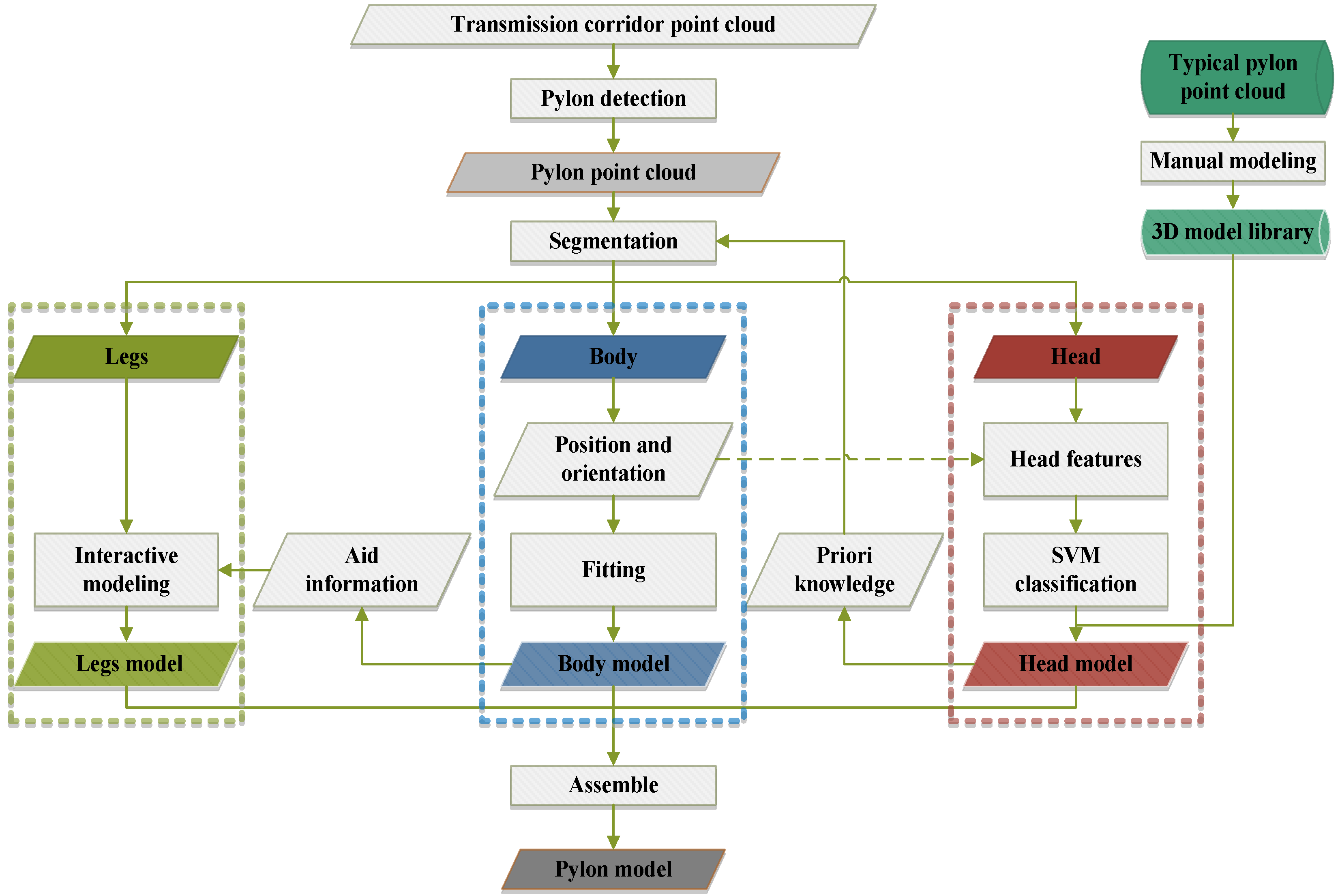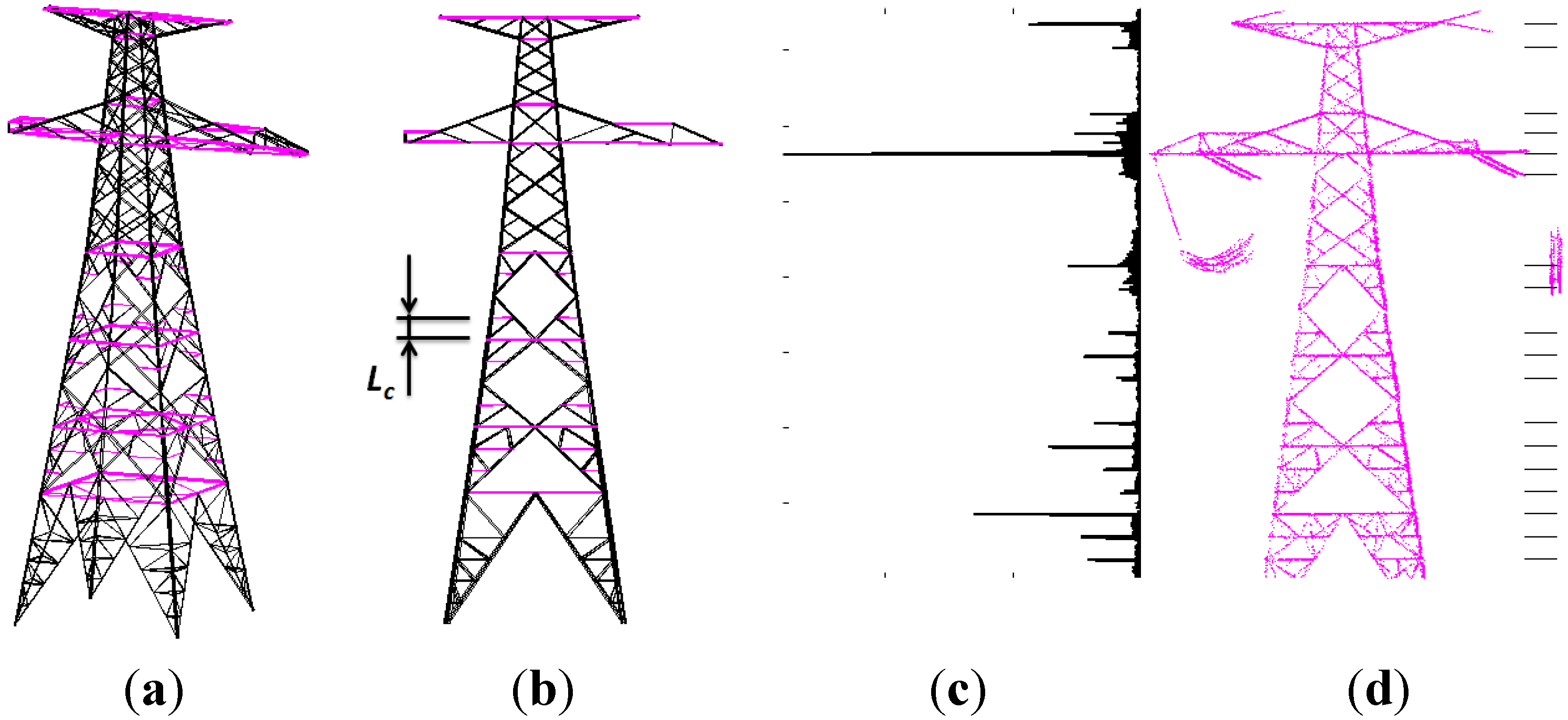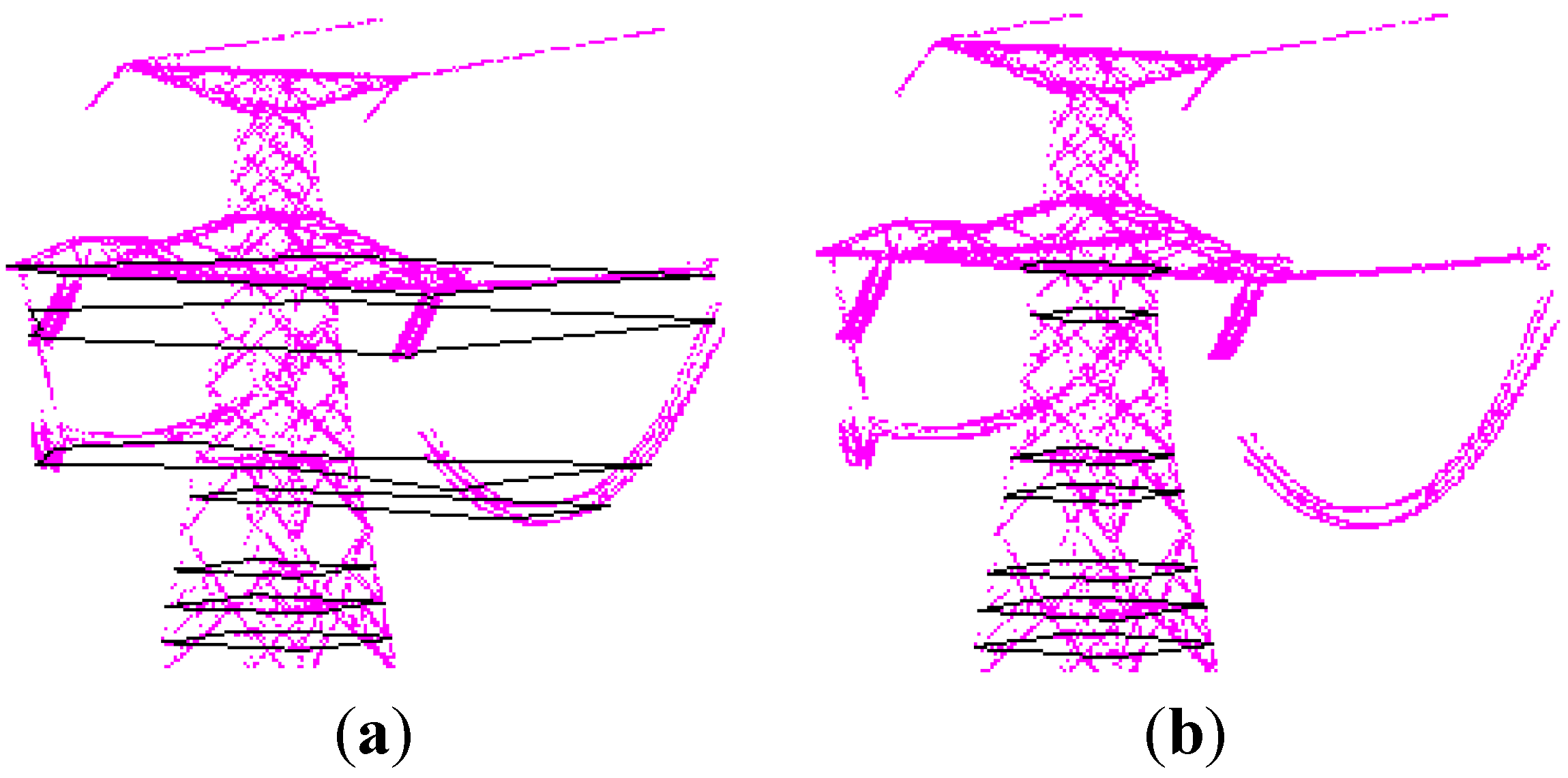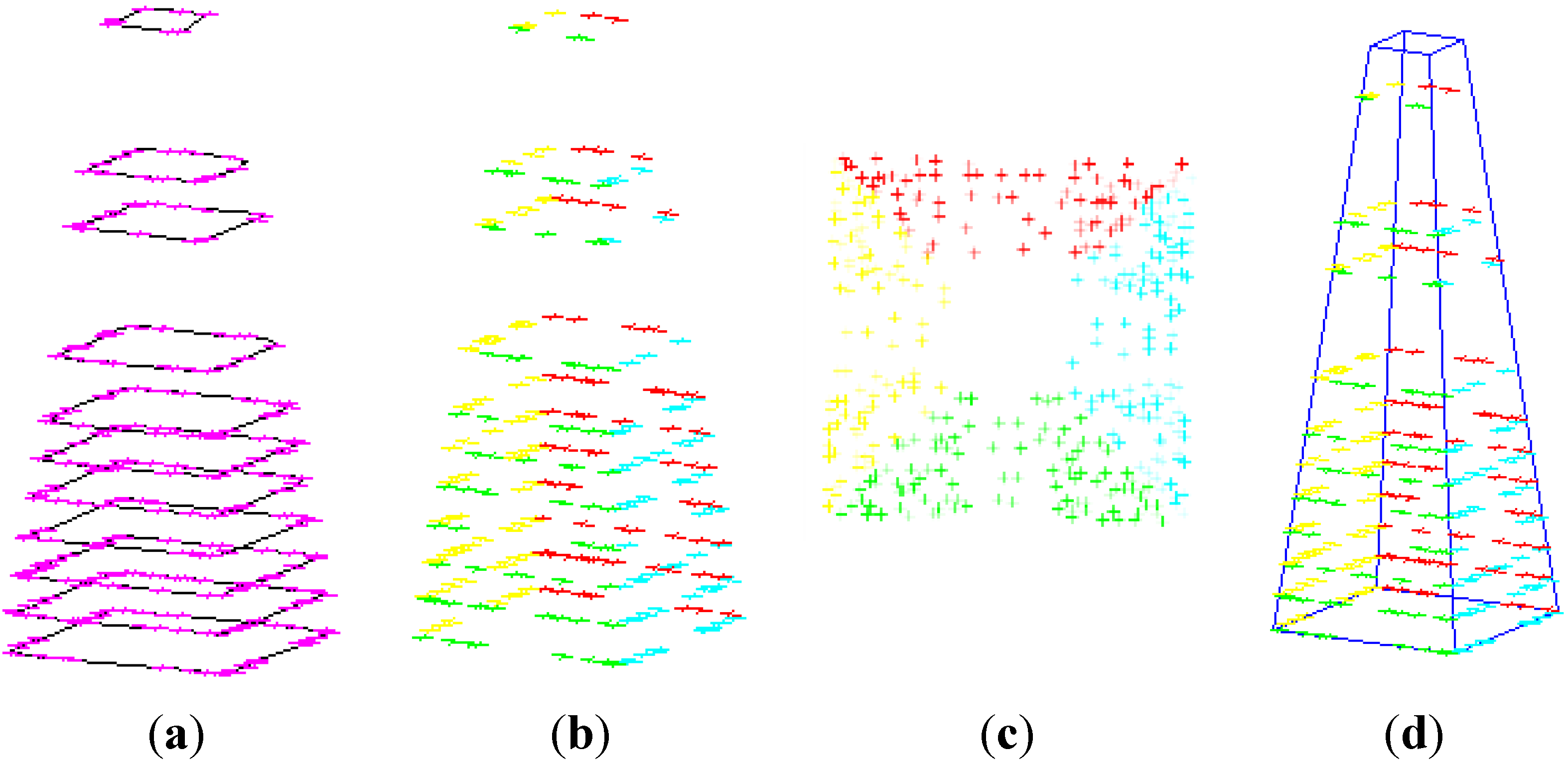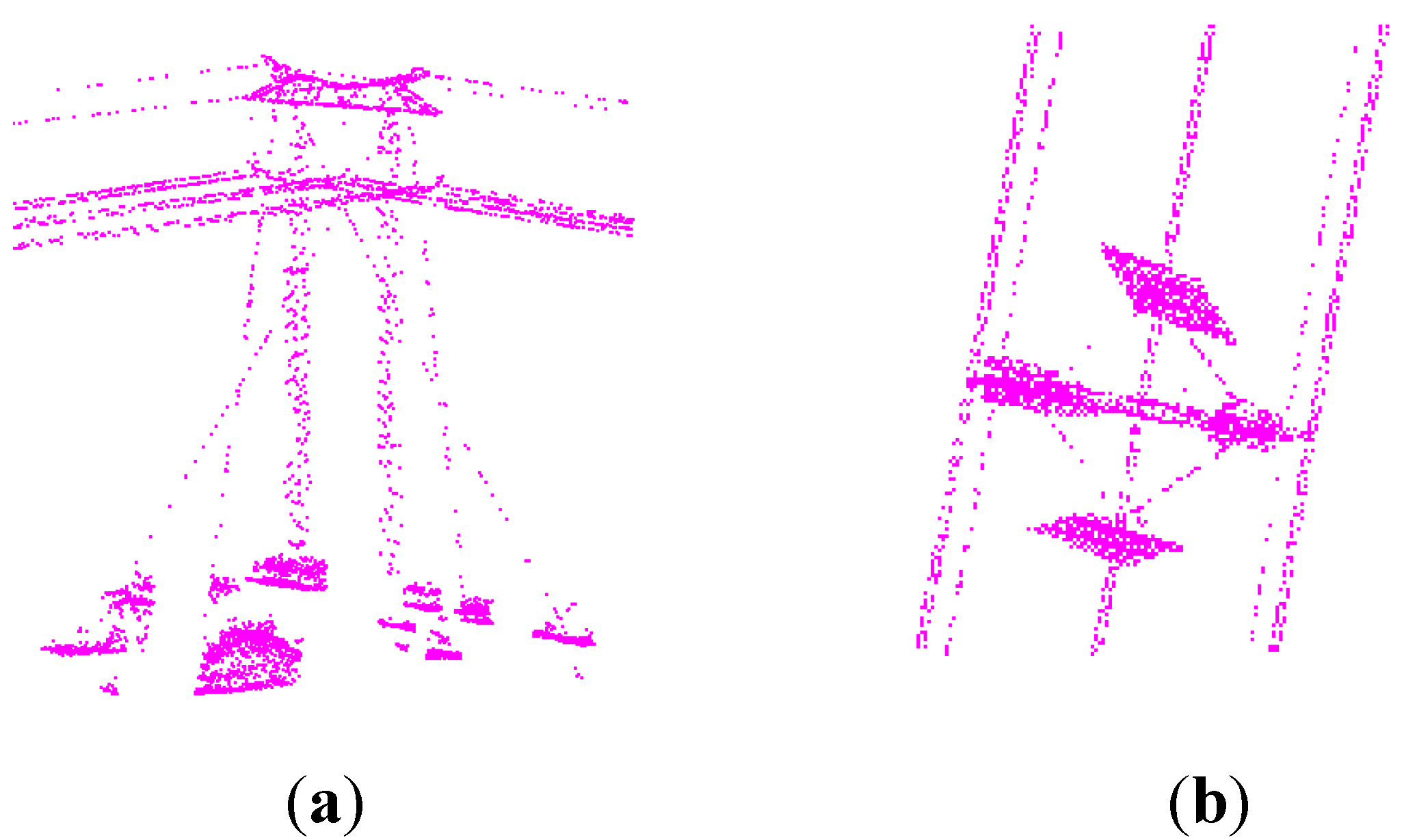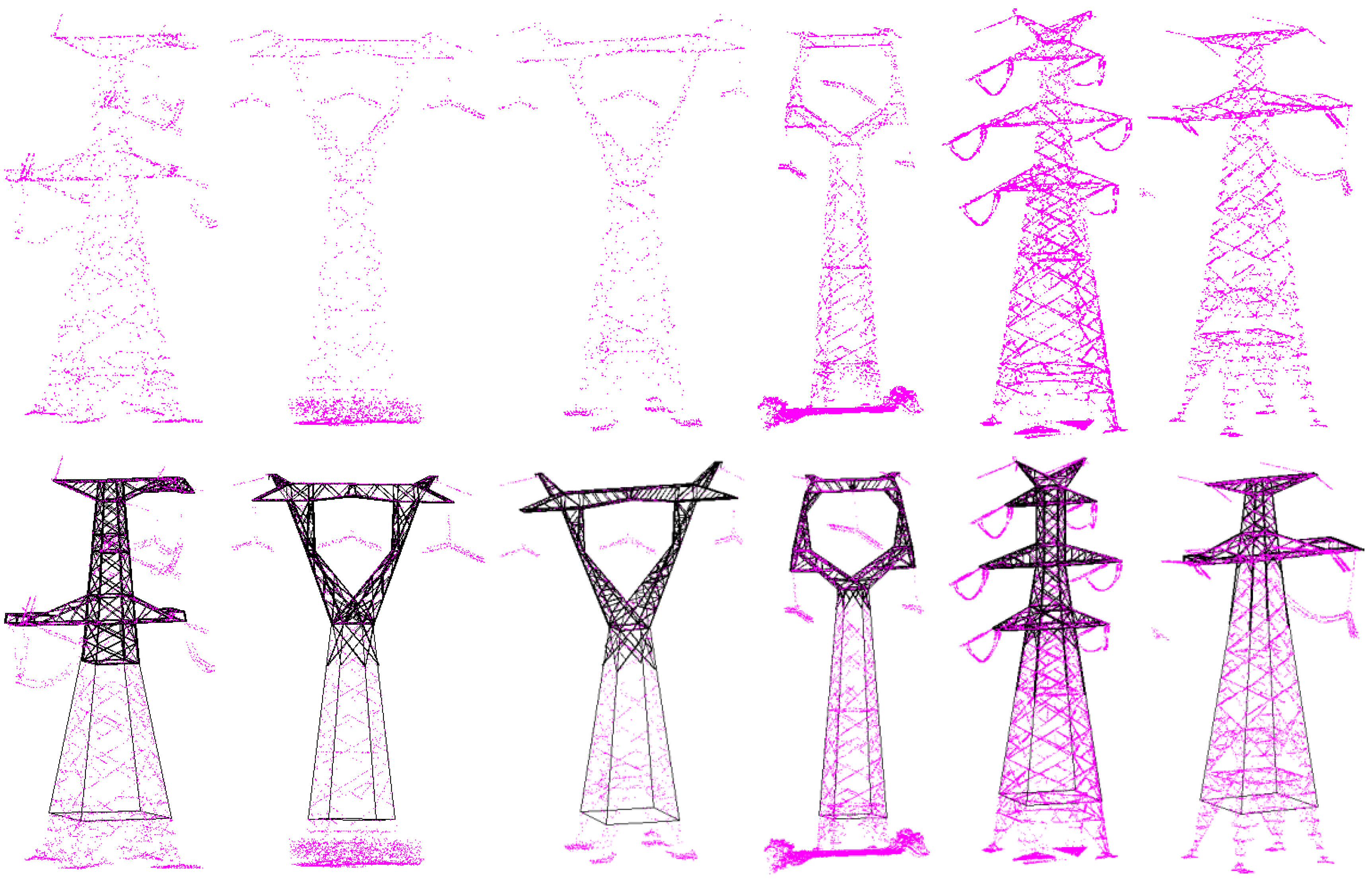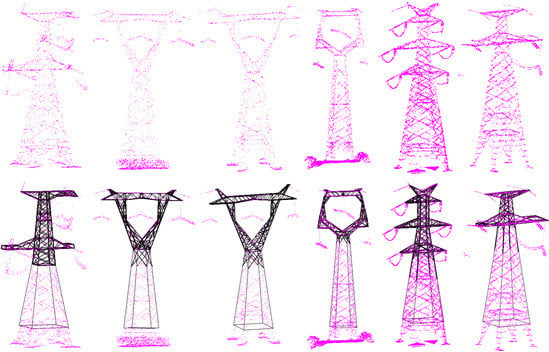Recently, a rapid development of smart grid has come to the electric power industry, which needs the support of highly accurate, fine and visual three-dimensional geospatial information of the power grid, especially for the high-voltage transmission grid crossing mountains and forests. Pylons are the elementary facility in the power grid and are directly related to security of high-voltage transmission grid. A 3D vector model of pylons is needed for 3D transmission corridors visualization, delivery and storage application. Additionally, the important parameters of pylons can be quickly measured in fine 3D vector model, which can support the numerical simulation analysis on force, weather, tree growth etc., so as to guarantee the security of the high-voltage transmission corridors.
The LiDAR system can quickly obtain dense 3D laser point clouds of high-voltage transmission corridor with high precision. It is widely applied in the power industry throughout the construction and operational period of the grid [
1,
2,
3]. In regard to pylon modeling, the popular solution in production often falls into manual operation with CAD software. Due to the complex structure and the high accuracy, such human interactions become a heavy and difficult work. The automatic method, however, has rarely been reported according to our knowledge. Using these data for rapid, accurate and fine three-dimensional modeling of grid facilities of high-voltage transmission is one of the key techniques for digitization and visualization of smart grid facilities.
1.1. Related Works
Over the past decades, 3D reconstruction from airborne LiDAR has achieved a bundle of works on both natural features (such as terrain, forests, trees, canopy,
etc.) and man-made features (e.g., buildings, roads, cars,
etc.). Since building reconstruction is the most-studied topic, the methodology can represent that of man-made features reconstruction. Methods reconstructing building purely from LiDAR data can be divided into two categories: model-driven and data-driven [
4,
5].
Model-Driven Method: In the model-driven method, models of typical buildings are predefined. The modeling is a process of searching the best model and solving parameters of that model. It is effective for low-density point clouds data and guarantee correct topology of the model [
6]. Several approaches for model estimation and selection have been proposed. Maas and Vosselman [
4] give a closed form solution for estimating gabled roof from laser points by invariant moments. Kada and McKinley [
7] select the model whose corresponding point normal fit to most of the directions of the primitive as the best model. Huang
et al. [
8] construct the target roof by a generative modeling method that fit the data with a predefined primitive library. The Reversible Jump Markov Chain Monte Carlo technique is applied for roof primitives’ selection and the sampling of their parameters. Henn
et al. [
9] derives simple building primitives from sparse LiDAR data using RANSAC (Random Sample Consensus) [
10] and a supervised classification method. To ensure the topological correctness, geometrical constraints such as rectangularity, parallelism on the roof geometry are taken into consideration while estimating its geometric parameters. Due to the model assumption on buildings, the types of reconstructed buildings are limited to those fit with the predefined models. Additionally, it is hard to fully express the true shape of complicated buildings and small component such as chimney, windows,
etc. Data-Driven Method: In the data-driven method, a building is assumed to be unstructured objects and reconstructed by combining and intersecting the split roof planes [
11]. It is applicable to complex roofs. It mainly consists of two steps: roof plane segmentation and topology reconstruction. Several approaches are proposed for roof planes segmentation, such as 3D Hough transform [
12,
13], RANSAC [
10,
14], region growing [
15], classification or clustering [
16]. The neighborhood relationships of the roof planes are inferred from the intersections of segmented planes. Elberink [
17] reconstructed roof topology through graph matching. Sampath and Shan [
18] determined the topology through an adjacency matrix that represents the connectivity of the segmented planar segments. However, the roof topology graph may contain mistakes because of point cloud segmentation failures caused by outliers or low point densities. So a high point density and quality data are required. The key issues of these methods lie on detection of building point clouds, segmentation of roof surface, and determination of topological connection relationship between facades.
As the point cloud quality improves and the demand for detailed model increases, methods that combine data driven with model constrains are developed. Lafarge
et al. [
19,
20] combine geometric 3D-primitives with mesh patches to achieve semantic, compact and generative models. Martin and Andreas [
21,
22] used planar half-space combination to form a semantic part of building model as a mathematical inequality equation. Xiong
et al. use graph to represent the topology of roof planes and sub graph to represent roof primitives [
23,
24]. Based on these model presentations, constrains derived from prior knowledge such as symmetries, co-planarity, parallelism, and orthogonality are used for model refinement [
22,
23]. Xiong
et al. [
24] apply a graph edit dictionary to correct the errors of roof topology effectively. Although it is effective to improve the final result, knowledge constrains are still challenging to detect automatically and reliability.
Works On Power Industry: In the application of power line inspection based on
ALS (Airborne LiDAR System), related studies mainly focus on automatic extraction of power lines and three-dimensional reconstruction. Most of these works consist of two steps: First, power lines points are extracted from the corridor scene point clouds. Second, power line is fitted to a certain geometry model for which a catenary model is chosen. McLaughlin [
25] proposed a supervised knowledge-based classification method for differentiating transmission lines from their surroundings. The corridor point clouds are labeled into three categories: transmission lines, vegetation, or surfaces. The algorithm correctly identified 86.9% of those data points that lay on transmission lines, and extracted 72.1% of the individual transmission line spans. Jwa
et al. [
26] introduce a Voxel-based Piece-wise Line Detector (VPLD) method that detects power line by grouping similar features at different levels of information (
i.e., points, segments and lines) based on well-known perceptual grouping framework. The final reconstruction of single power line models is accomplished by applying a non-linear least square regression for estimating catenary line parameters to a piece-wisely segmented voxel space. Kim and Sohn [
27] start with extract 21 features from voxel space of different scales as well as its embedded points, then apply the Random Forest as an ensemble decision classifier to classify power-line scenes into ground, vegetation, power lines, electricity pylons and buildings with these extracted features, and finally achieved an optimized classification performance of 96% success rate. Sohn
et al. [
28] proposed a method base on Markov Random Field (MRF) to classify key features (power lines, pylons, and buildings) that comprising utility corridor scene using airborne LiDAR data and model power lines in 3D object space. Since the geometry model of power line is relatively simple, the first step, separating power line points from background point clouds correctly, is the most significant issue in the power line reconstruction.
Generally, most of the existing 3D modeling methods based on point clouds is designed for specific modeling object. Due to the different distribution characteristics of different modeling target point clouds, these methods are difficult to be applied directly on the automatic three-dimensional reconstruction of pylon.


